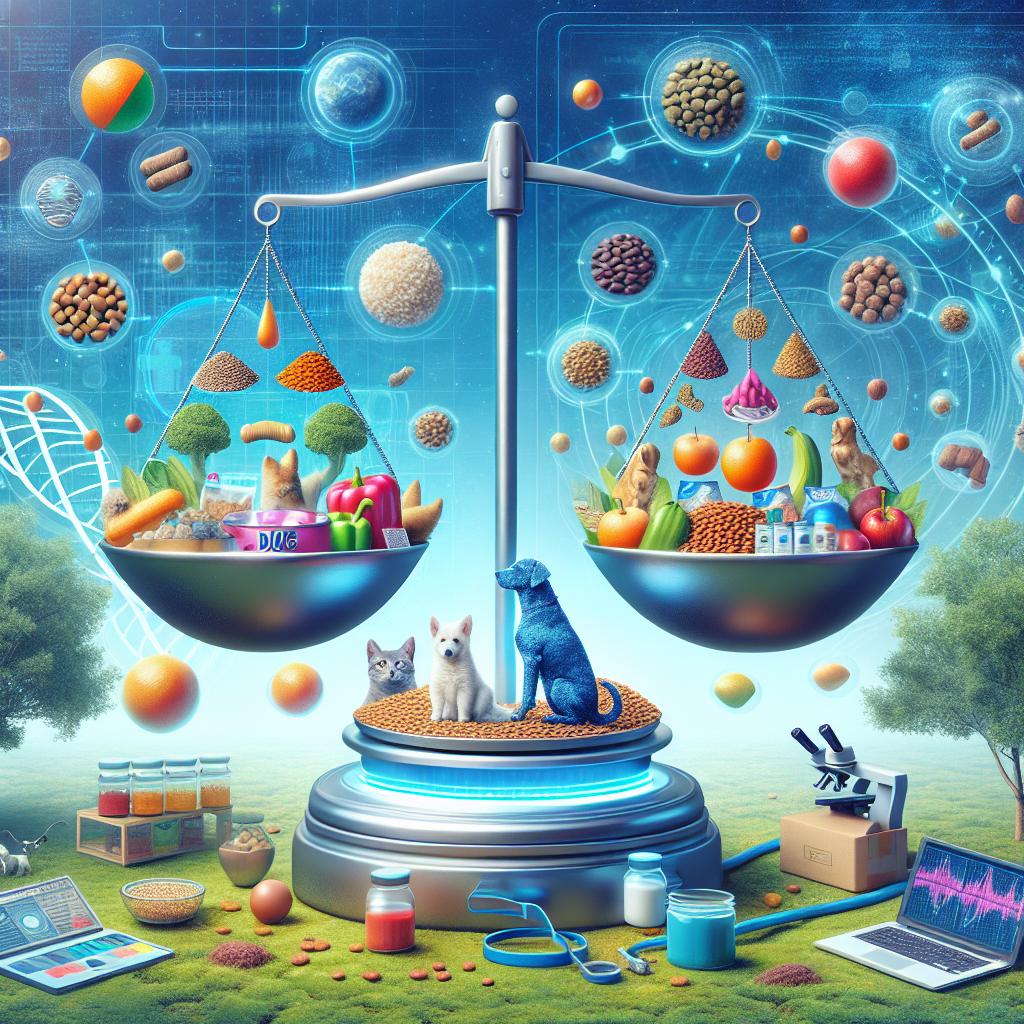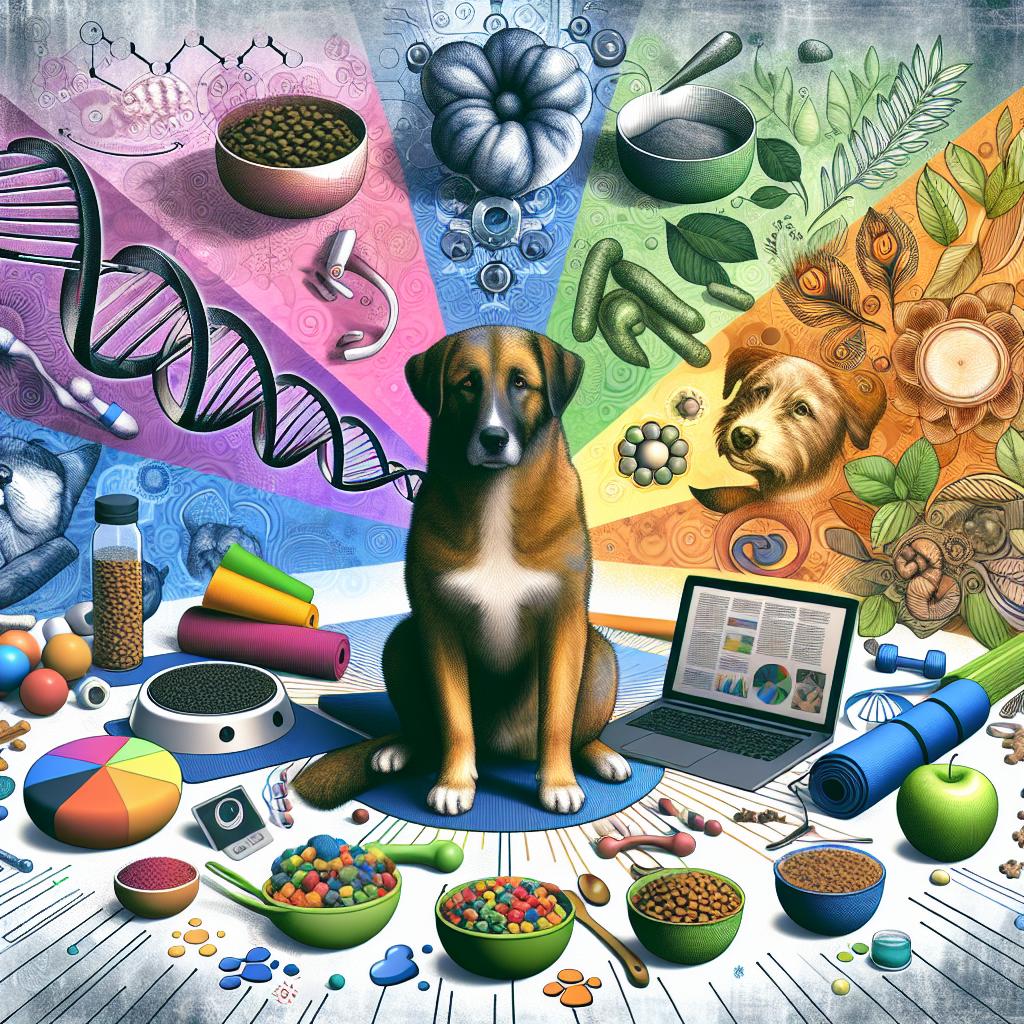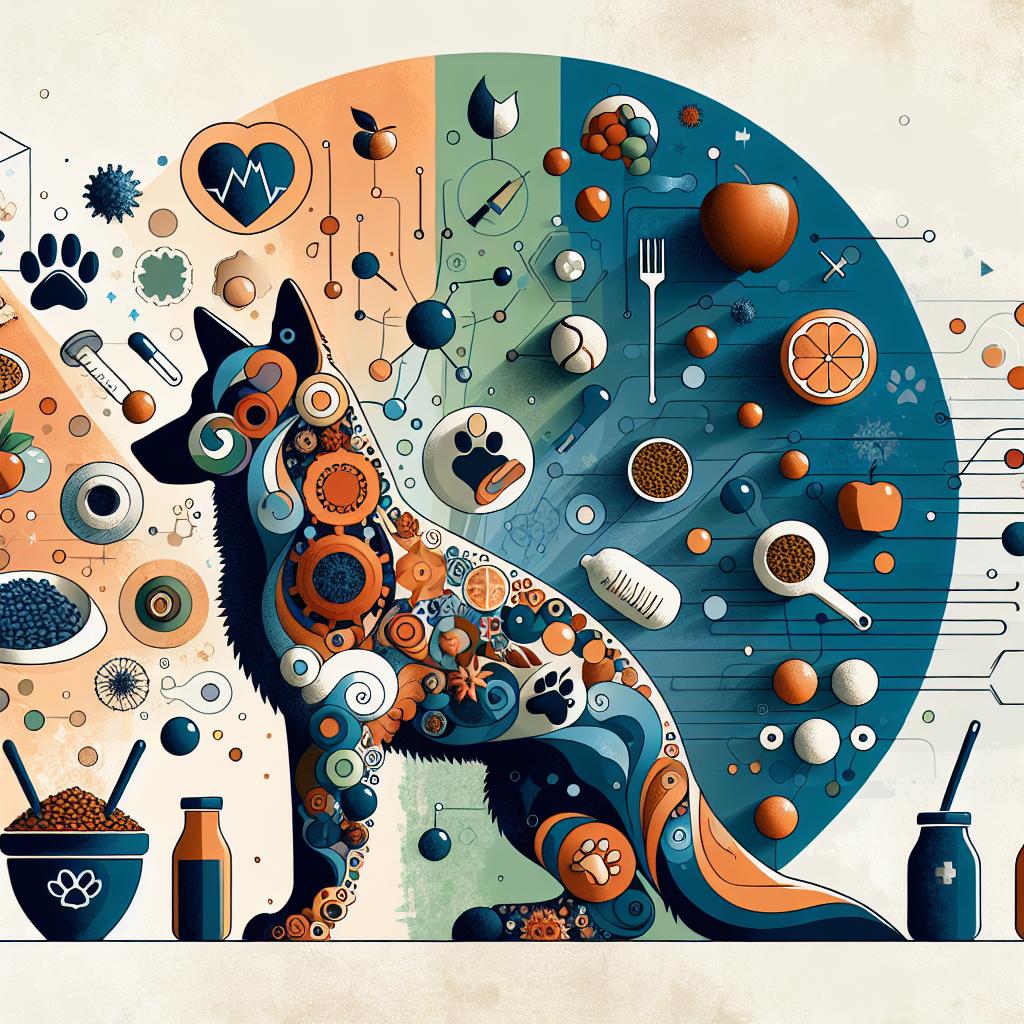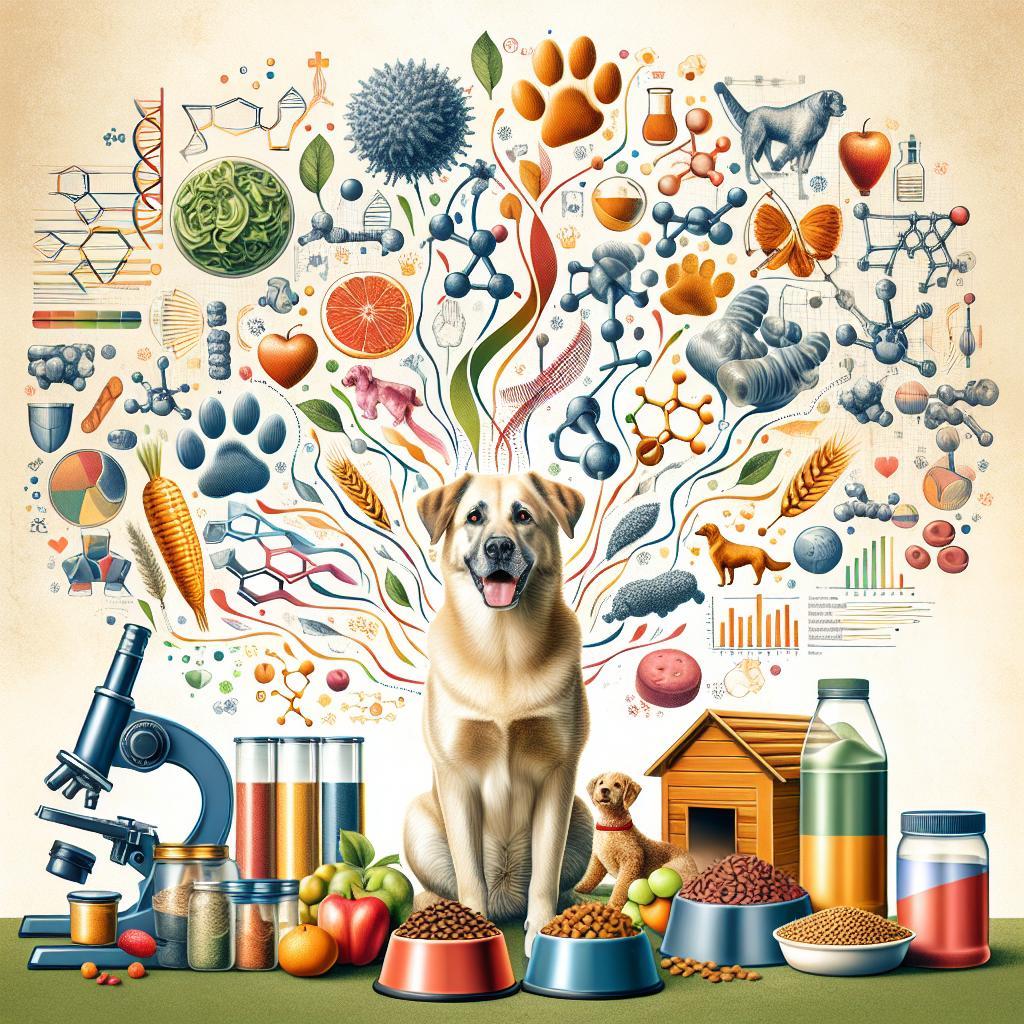The Importance of Balanced Meals for Dogs: Nourishing Our Furry Companions
In the bustling world of pet ownership, where cuddles and playtimes reign supreme, the conversation often shifts to the vital question of nutrition. Just as the foundation of human health is built upon a well-rounded diet, so too is the well-being of our four-legged friends intricately linked to what they eat. The simple act of feeding our dogs goes beyond mere survival; it’s a commitment to their longevity, vitality, and happiness. As guardians of these beloved companions, understanding the significance of balanced meals is crucial—not only for their physical health but also for their emotional and behavioral development. Join us as we explore the essentials of canine nutrition, unraveling the reasons why a thoughtfully crafted diet is key to fostering a joyful and vibrant life for our dogs.
Understanding Nutritional Fundamentals for Canine Health
A balanced diet is essential for maintaining overall canine health, ensuring that dogs receive the necessary nutrients for their growth and daily functioning. The cornerstone of a well-rounded meal plan includes a mix of proteins, carbohydrates, fats, vitamins, and minerals. Each of these components plays a critical role in your dog’s health:
- Proteins: Essential for muscle growth and tissue repair.
- Carbohydrates: Provide energy needed for daily activities.
- Fats: Support healthy skin and coat, as well as hormone production.
- Vitamins and Minerals: Aid in various metabolic processes and strengthen the immune system.
Understanding the caloric needs of your dog is equally important. Different factors such as age, breed, size, and activity level dictate how much and what type of food is ideal. For instance, active breeds may require more energy-dense foods compared to less active ones. To simplify meal planning, consider the following table that outlines the recommended daily caloric intake based on dog weight:
| Weight (lbs) | Daily Caloric Intake (kcal) |
|---|---|
| 5-10 | 200-300 |
| 11-20 | 300-600 |
| 21-50 | 600-1200 |
| 51-100 | 1200-2000 |

The Role of Protein, Fats, and Carbohydrates in Dog Diets
When it comes to crafting a well-rounded diet for our canine companions, understanding the roles of protein, fats, and carbohydrates is essential. Each macronutrient contributes uniquely to a dog’s overall health, ensuring they remain energetic and robust. Protein serves as a vital building block for muscles, tissues, and organs, offering essential amino acids necessary for growth and repair. Quality protein sources include:
- Lean meats (chicken, turkey, beef)
- Fish (salmon, sardines)
- Eggs
- Legumes and beans
Fats are equally crucial, providing concentrated energy and supporting the absorption of fat-soluble vitamins. Additionally, they contribute to healthy skin and a shiny coat. Opt for healthy fat sources like:
- Fish oil
- Flaxseed oil
- Chicken fat
- Vegetable oils (canola, sunflower)
Carbohydrates, often overlooked, also play an important role by furnishing energy and aiding digestive health. Whole grains, fruits, and vegetables can be excellent sources of carbohydrates that deliver fiber and essential nutrients. Here’s a simple comparison of these macronutrients:
| Macronutrient | Primary Function | Sources |
|---|---|---|
| Protein | Muscle growth and repair | Meat, fish, eggs |
| Fats | Energy and nutrient absorption | Oils, animal fats |
| Carbohydrates | Energy and digestion | Grains, fruits, vegetables |
Essential Vitamins and Minerals: Building Blocks for a Happy Dog
To ensure your furry friend leads a happy and fulfilling life, it’s crucial to provide them with a diet rich in essential vitamins and minerals. These nutrients play an integral role in maintaining not just physical health, but also mental wellness. For instance, Vitamin A supports vision and immune function, while Vitamin D aids in calcium absorption, promoting healthy bones. Essential minerals like zinc facilitate skin healing and bolster the immune system, ensuring your dog can thrive in their environment.
In order to achieve a balanced meal, it’s helpful to be aware of the key components that every dog’s diet should include. Consider incorporating the following nutrients:
- Omega-3 Fatty Acids: For a shiny coat and healthy skin.
- Calcium: Essential for strong bones and teeth.
- Fiber: Aids in digestion and regulates bowel movements.
- Antioxidants: Help combat oxidative stress and support immune health.
Integrating these nutrients into your dog’s daily meals can be done through a variety of foods, ensuring balanced nutrition. Below is a simple table illustrating some dog-friendly food sources:
| Food Source | Key Nutrients | Benefits |
|---|---|---|
| Carrots | Vitamin A, Fiber | Supports eye health and digestion. |
| Salmon | Omega-3, Protein | Promotes healthy skin and coat. |
| Sweet Potatoes | Vitamin A, Fiber | Rich in antioxidants and supports digestive health. |
| Yogurt | Calcium, Probiotics | Aids in digestion and bone health. |

Practical Tips for Crafting Balanced Meals at Home
Creating balanced meals for your dog at home requires careful planning to ensure they receive all essential nutrients. Start by incorporating a mix of high-quality proteins, healthy carbohydrates, and fresh vegetables. Consider using ingredients such as lean meats, whole grains, and colorful veggies to provide a variety of nutrients. Here are some suggestions for balanced meal components:
- Proteins: Chicken, beef, fish, or legumes
- Carbohydrates: Brown rice, quinoa, or oats
- Vegetables: Carrots, peas, spinach, or sweet potatoes
To make meal preparation easier, you can create a simple table that outlines and balances the necessary portions. It’s also crucial to adjust the quantities based on your dog’s size, age, and activity level. Here’s a brief illustration:
| Ingredient | Recommended Portion (per meal) |
|---|---|
| Protein Source | 1/2 to 1 cup |
| Carbohydrate Source | 1/4 to 1/2 cup |
| Vegetable Source | 1/4 cup (cooked) |
Additionally, remember to incorporate healthy fats like fish oil or flaxseed oil for a shiny coat and overall well-being. Always consult with your veterinarian regarding specific dietary needs or restrictions, especially if your pet has food allergies or health issues. Balancing meals at home can be an enjoyable experience, ensuring your furry friend thrives on a nutritious diet tailored for their unique needs.
Q&A
Q&A: The Importance of Balanced Meals for Dogs
Q1: Why is a balanced diet essential for dogs?
A1: Just like humans, dogs need a variety of nutrients to thrive and maintain overall health. A balanced diet ensures they receive the right proportions of proteins, fats, carbohydrates, vitamins, and minerals. This helps support their immune system, healthy skin, shiny coats, and strong bones, ultimately promoting a longer and happier life.
Q2: What constitutes a balanced meal for dogs?
A2: A balanced meal for dogs typically includes high-quality protein sources (like chicken, beef, or fish), healthy fats (such as omega-3 found in fish oil), carbohydrates (like sweet potatoes or brown rice), and plenty of fruits and vegetables for vitamins and fiber. The proportions may vary depending on the dog’s age, size, and activity level, so it’s best to consult with a veterinarian for tailored recommendations.
Q3: Can dogs get all their nutrients from commercial dog food?
A3: Many commercial dog foods are designed to provide balanced nutrition and meet the standards set by regulatory bodies. However, not all brands are created equal. It’s important to choose high-quality products that list real meat as the first ingredient and avoid fillers and artificial additives. Some dog owners also opt for homemade diets, which can be nutritious, but it requires careful planning to ensure balance.
Q4: How can I tell if my dog is eating a balanced diet?
A4: Signs of a well-balanced diet include healthy skin and coat, good energy levels, regular and firm stools, and maintaining an appropriate weight. Additionally, regular veterinary check-ups can help assess your dog’s nutritional needs and overall health, ensuring that their diet supports their well-being.
Q5: What are the consequences of feeding an unbalanced diet to my dog?
A5: An unbalanced diet can lead to a range of health issues in dogs, including obesity, diabetes, skin problems, and digestive issues. Long-term deficiencies in vital nutrients can also result in serious conditions affecting the heart, liver, and other organs. Thus, it’s crucial to prioritize a nutritionally complete diet to prevent such concerns.
Q6: Can I supplement my dog’s food with homemade treats?
A6: Absolutely! Homemade treats can be a great addition to your dog’s diet, as long as they are healthy and given in moderation. Offer treats in the form of fruits (like apples or blueberries), vegetables (like carrots or green beans), or proteins (like cooked chicken) that complement their main meals, rather than using treats that are high in sugar or fat.
Q7: How often should I adjust my dog’s diet?
A7: As dogs age, their dietary needs may change. Puppies require nutrient-rich food for growth, while older dogs might need fewer calories and different nutrient profiles. Additionally, changes in activity level, health status, and breed can affect dietary needs. Regular consultations with your veterinarian can help you adjust your dog’s diet appropriately as they change through different life stages.
Q8: What should I do if my dog has special dietary needs?
A8: If your dog has specific health issues or dietary restrictions, it’s essential to work closely with your veterinarian. They can help create a specialized diet plan to ensure your dog receives all necessary nutrients without triggering any health problems. This may involve specific commercial diets or carefully balanced homemade meals.
Q9: Any tips for ensuring my dog enjoys a balanced meal?
A9: Dogs are often creatures of habit, but you can make mealtime exciting by rotating different protein sources or incorporating various dog-friendly fruits and veggies into their meals. You can also use interactive feeding toys to engage them during mealtime, making healthy eating both enjoyable and enriching for your furry friend.
Q10: What are the next steps if I’m unsure about my dog’s diet?
A10: If you’re uncertain about your dog’s dietary needs or current food quality, the best course of action is to schedule a veterinary consultation. Your vet can provide personalized advice based on your dog’s health, lifestyle, and dietary preferences, ensuring they receive a balanced diet that supports their needs. After all, a happy dog is a healthy dog!
To Conclude
understanding the significance of balanced meals for our canine companions is essential for promoting their overall health and well-being. Just as we strive for diverse and nutritious diets, our dogs too deserve meals that cater to their unique nutritional needs. A well-balanced diet not only supports their physical vitality but also enhances their emotional happiness, ensuring that they feel their best every day.
As guardians of our furry friends, let us take the time to educate ourselves on proper nutrition and invest in quality ingredients. Whether you choose commercial dog food or prepare homemade meals, the goal remains the same: to nourish our pets in a way that allows them to thrive. Remember, every bowl filled with love and balanced nutrients is a step towards a longer, healthier life for our loyal companions. So let’s commit to providing them with the dietary care they deserve, and together, we can enjoy many joyful and active moments ahead.

